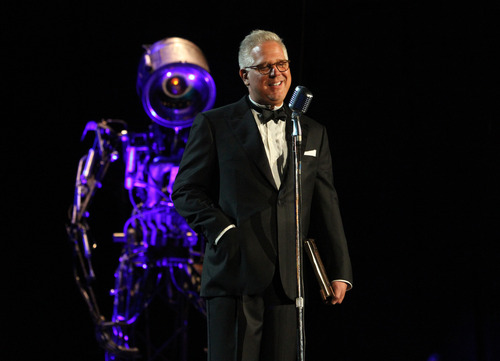This is an archived article that was published on sltrib.com in 2013, and information in the article may be outdated. It is provided only for personal research purposes and may not be reprinted.
The following is guest commentary. For The Tribune's story on Glenn Beck's show, click here.
Earlier this month, Glenn Beck rented several rooms in downtown Salt Lake City at the Grand America Hotel to display an "Independence Through History" exhibition. This accompanied his "Man in the Moon" rally, which took place just a few miles away at the USANA Amphitheatre.
The exhibition occupied two small rooms and brought together a panoply of objects spanning three centuries. Early American currency was presented alongside 18th century Bibles, sculptures of simian "slaves" and presidential memorabilia. Many of these items derived from the personal collection of David Barton, a publisher of tea party literature.
The adjoining room contained objects from Glenn Beck's personal collection. This included a hooded KKK cape and a swastika banner which had been used at Nuremberg. Underneath was an illuminated vitrine containing a copy of Mein Kampf signed by Adolf Hitler, a stack of love letters by Hermann Göring, and a satin handkerchief browned with Hitler's blood. Nearby was an early edition of Anne Frank's Diary.
Lacking any deference to professional standards of display, Beck's exhibition offered no connection between these items and the early Americana nearby. From a museological perspective, the show was brazenly dilettante. Known to be a fringe demagogue, Beck has often drawn parallels between Nazi history and contemporary American politics, acts which have brought him much criticism — and parody. The exhibition at the Grand America, however, represented a departure from Beck's usual rhetoric.
To start, I can't help wondering what prompted Beck to collect such macabre objects and include them among his personal belongings. What are the virtues of owning Göring's love letters, Hitler's signature or a few drops of his blood?
Surely, harboring such items adheres to a personality cult and suggests a sympathizer rather than a critic. The very presence of these objects begs the question: How does this material survive?
More than 70 years old, most of the detritus of Germany's Nationalsozialisten was destroyed after the war and continue to be banned to this day. The survival of such "memorabilia" can only be achieved with help from Nazi sympathizers wishing to pass on the torch.
The proximity of the bloody handkerchief with Anne Frank's diary was deeply offensive, and insensitive to Salt Lake City's Jewish community. Among them are Holocaust survivors and their descendants, including myself, who found this profoundly distasteful.
Just imagine exhibiting Osama bin Laden's blood together with an item belonging to a 9/11 victim. The thought turns the stomach and is the very zenith of ignorance.
To add insult to injury, Beck's displays were met with complete apathy by the citizens of Salt Lake City. Visitors wound their way through the room in an almost robotic torpor, demonstrating neither revulsion nor too much interest either. Nor has there been any comment in the press or media. Gee, isn't this how this stuff was received the first time around and, consequently, mushroomed out of control?
To be sure, the above grievances do not characterize a "typical" neo-Nazi. Beck is not a skinhead who desecrates Jewish gravestones. Moreover, harboring such material and disseminating it to such a lackadaisical audience is within Beck's constitutional rights.
Still, it reveals more about tea party sensibilities and Beck's personal values than I dared thought possible.
Alexandra Karl is an art historian and educator. She lives in Salt Lake City.



